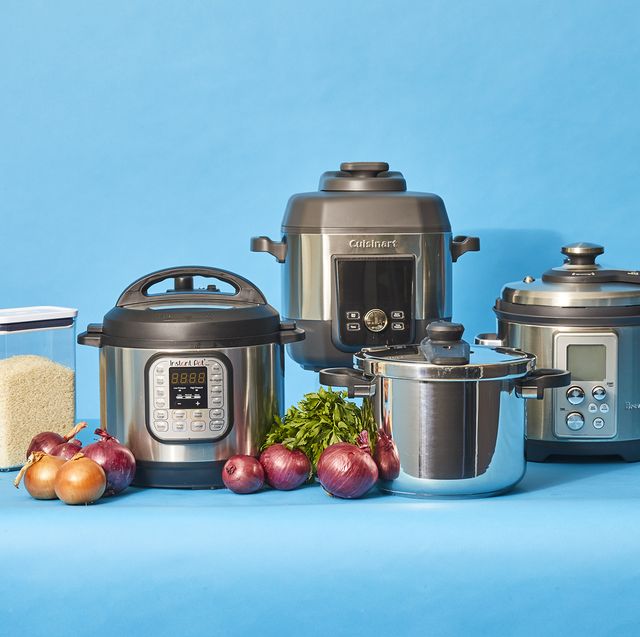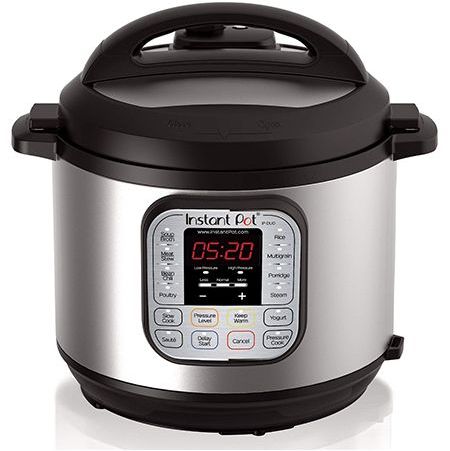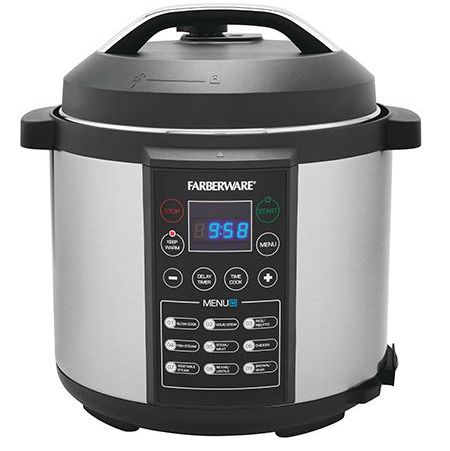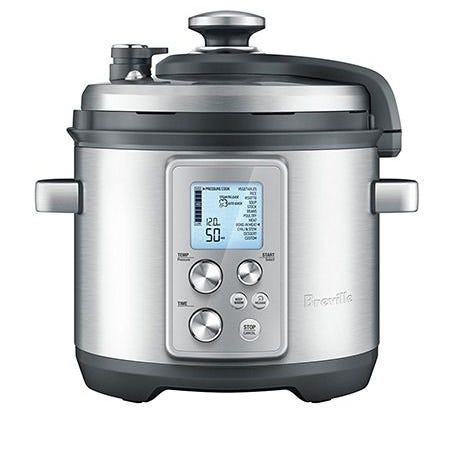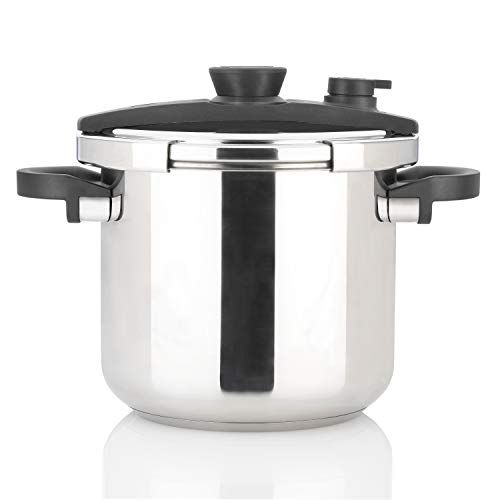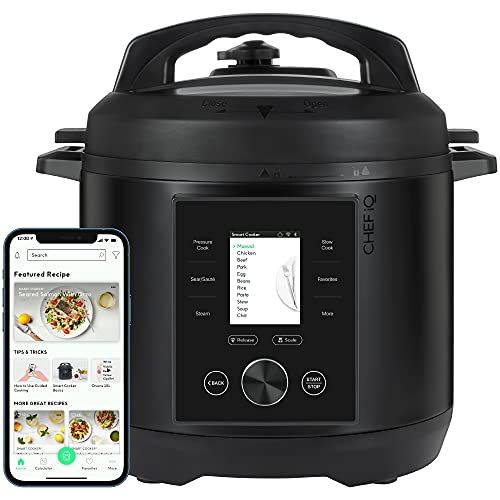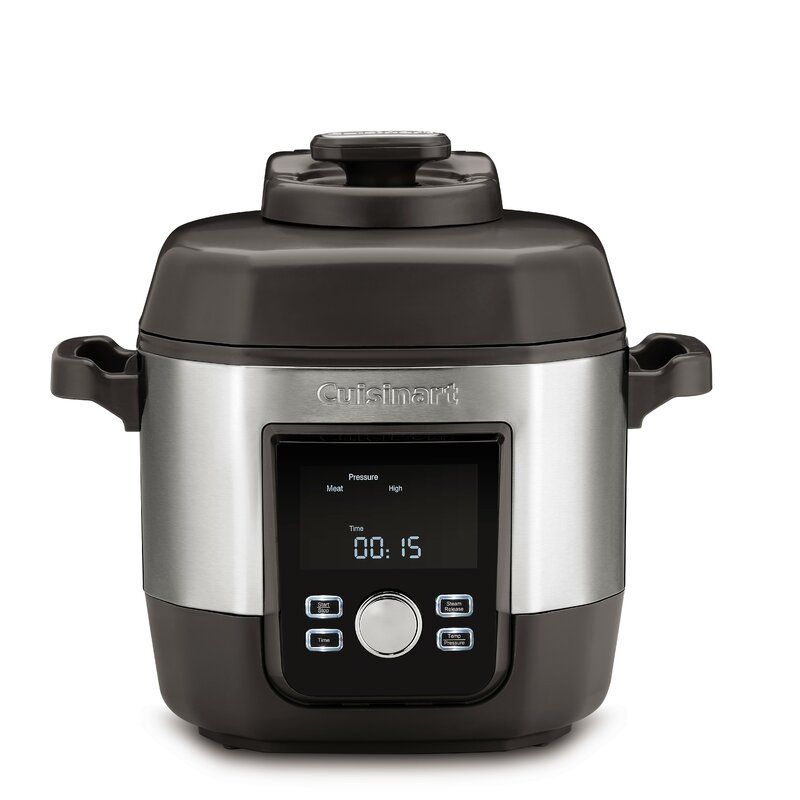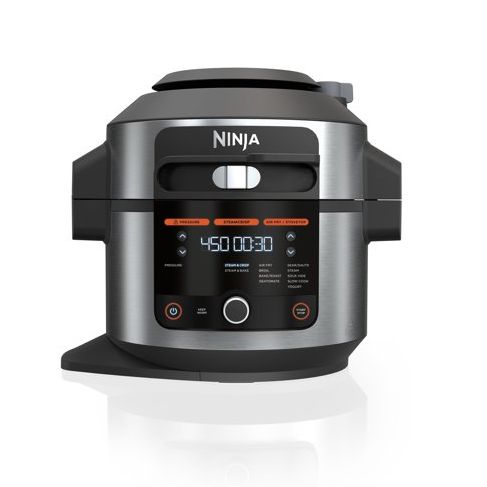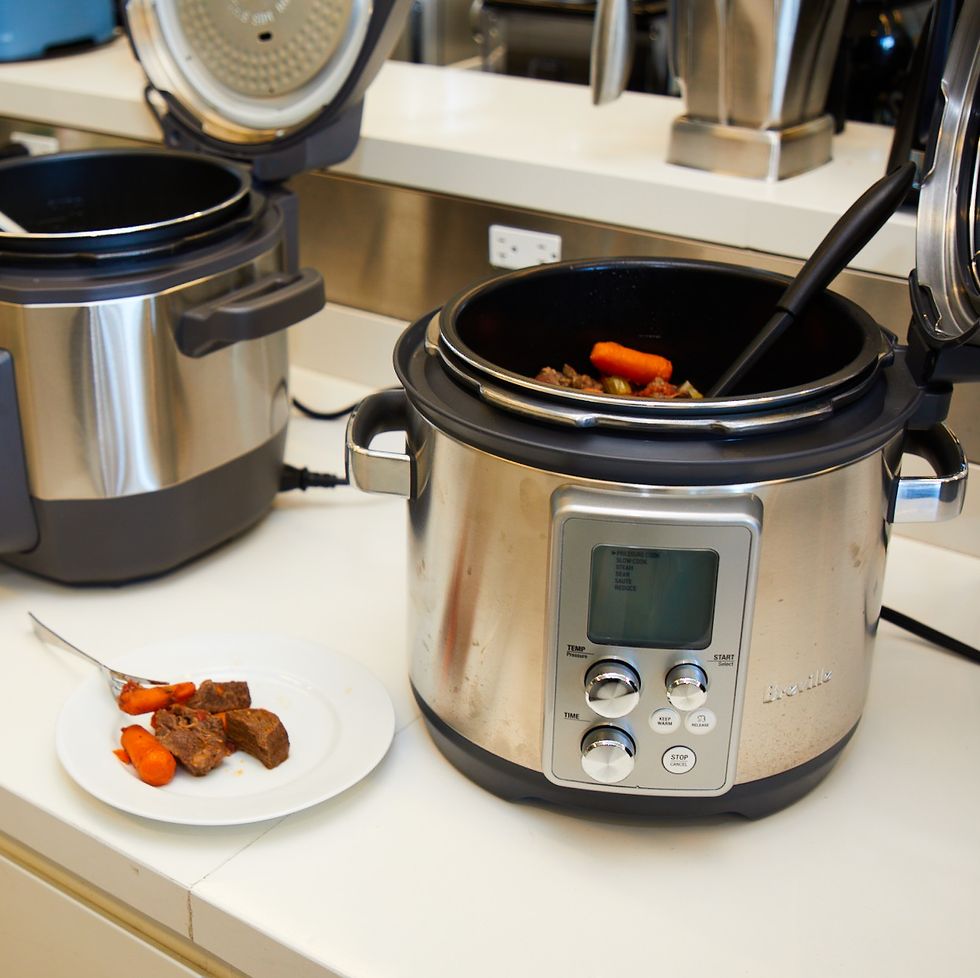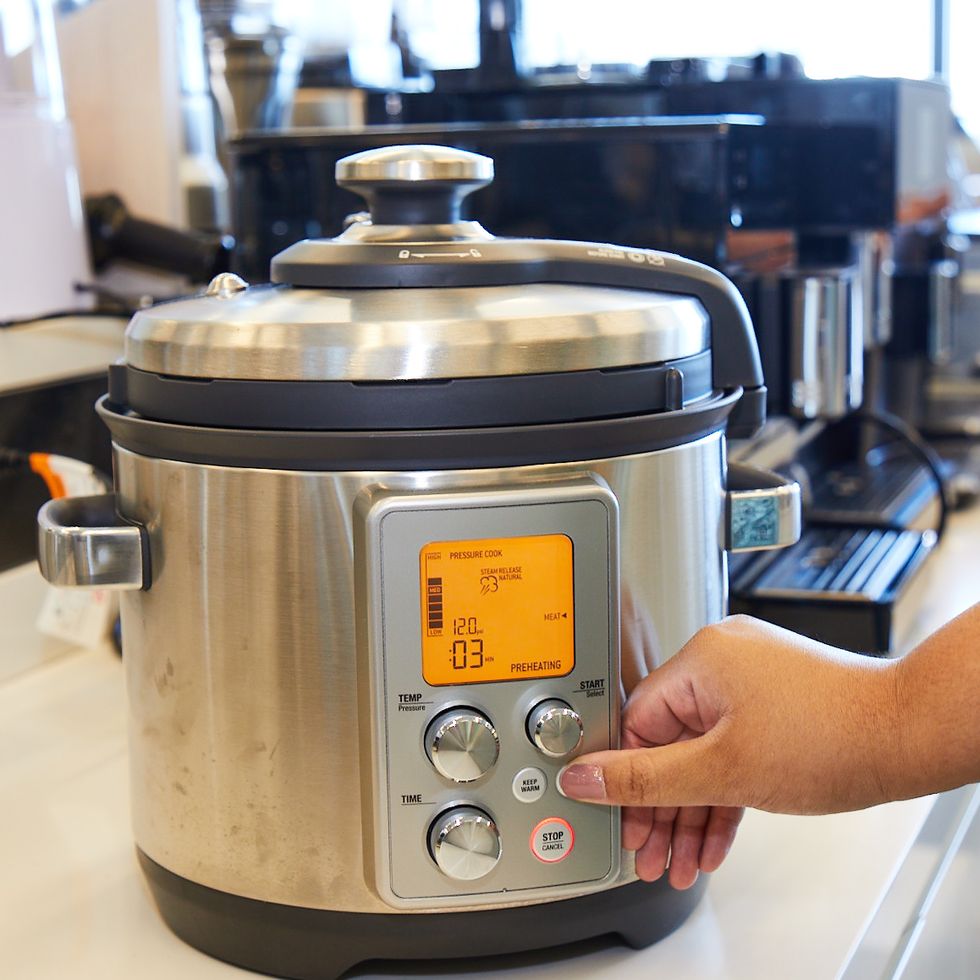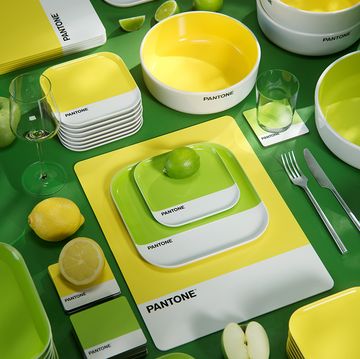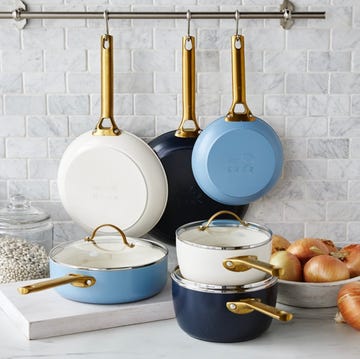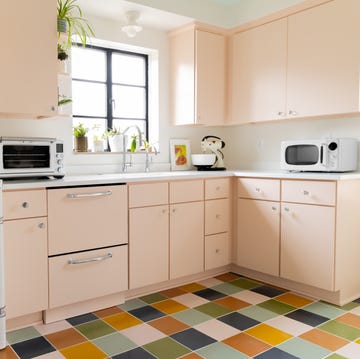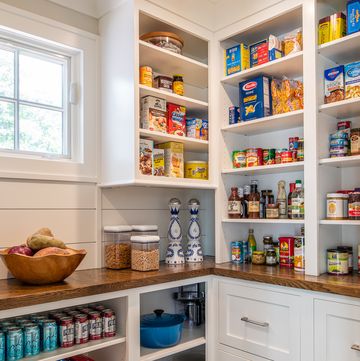8 Best Pressure Cookers of 2023, According to Testing
These multi-functional cooking tools are a major upgrade from what your grandmother used.
We've been independently researching and testing products for over 120 years. If you buy through our links, we may earn a commission. Learn more about our review process.
This story was updated in September 2022 to ensure all pressure cookers tested and vetted by the Good Housekeeping Institute Kitchen Appliances and Innovation Lab were in stock and reflected current pricing. New picks were added based on additional Lab testing results and more information was added to help explain how we test.
A pressure cooker is one of the best hands-off ways to get dinner on the table quickly — one-pot meals like soups and stews come together faster than they do in the oven or on the stove using a Dutch oven. In most cases, you simply add ingredients to the pot with some liquid and cover it with the locking lid. They're great for busy cooks since you can have a full meal on the table in under an hour with minimal prep work.
Here at the Good Housekeeping Institute our pros in the Kitchen Appliances and Innovation Lab are constantly testing the latest kitchen gadgets —like slow cookers, Instant Pots and of course, pressure cookers. We've put over 40 pressure cookers to the test in recent years, including 12 models in our most recent side-by-side Lab test. Our experts evaluated how well each model could pressure cook (and slow cook) a beef stew, plus assessed each model's ability to make rice. We also rated how quickly they came up to pressure and whether they could release pressure both quickly and naturally. We also scored each pressure cooker's ease of use, including how intuitive and easy to read the controls are, the variety of settings offered, how easy it is to clean and the clarity of the owner's manual.
Our top picks:
Stick around after our picks for more information on how we test pressure cookers and what you should consider as you shop for one.

Brigitt is a writer, editor and craft stylist with nearly 15 years of experience. She specializes in lifestyle topics, including home, health, parenting, beauty, style, food, entertaining, travel and weddings. She has written for Glamour, People, Good Housekeeping, Women's Health, Real Simple, Martha Stewart, Apartment Therapy, The Spruce, and more.

Raena Loper (she/her) is a fashion journalist and product analyst based in New Jersey whose work has appeared in Forbes, Good Housekeeping and O, The Oprah Magazine. Raena is a graduate from Montclair State University where she earned a degree in fashion studies as well as gender, sexuality and women's studies. In her free time, she enjoys sewing, cooking BBQ and spending time with family.
Watch Next

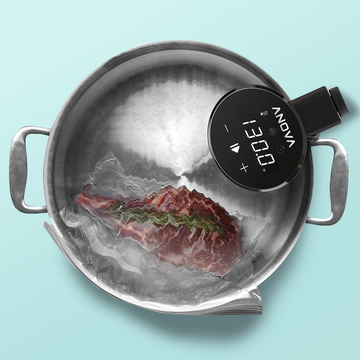
The Best Sous Vide Machines
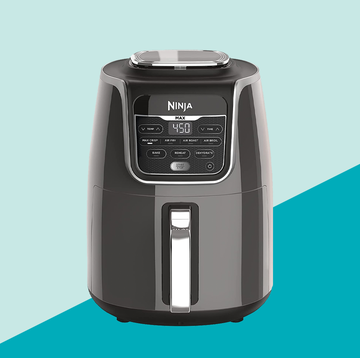
How Are Air Fryers and Convection Ovens Different?
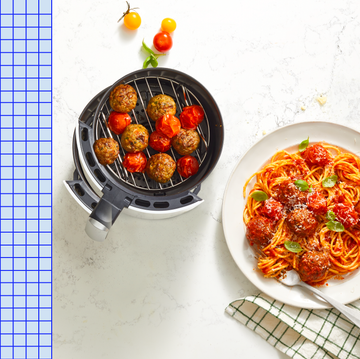
How to Get More From Your Air Fryer
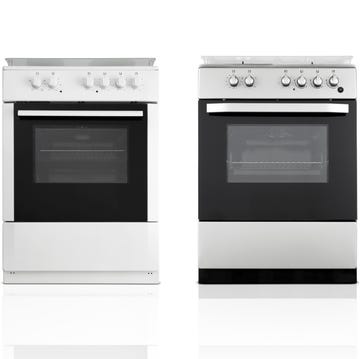
Gas vs. Electric Stoves
